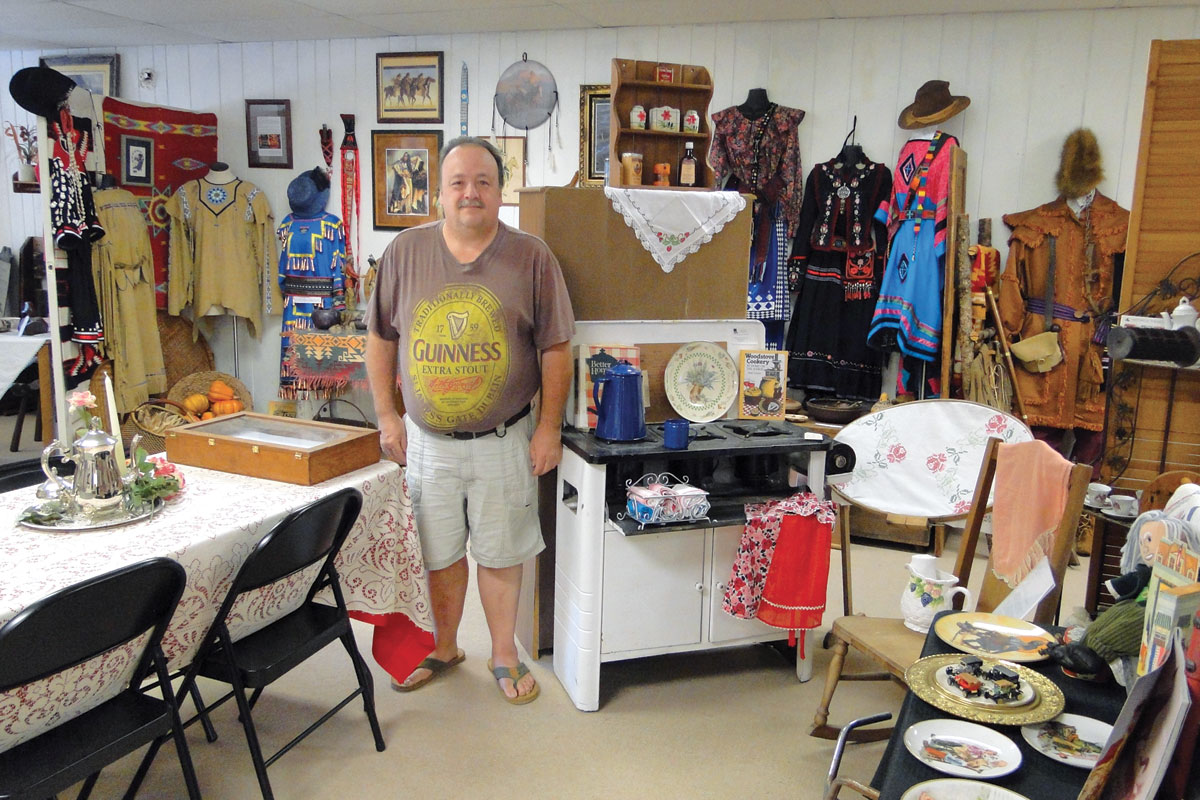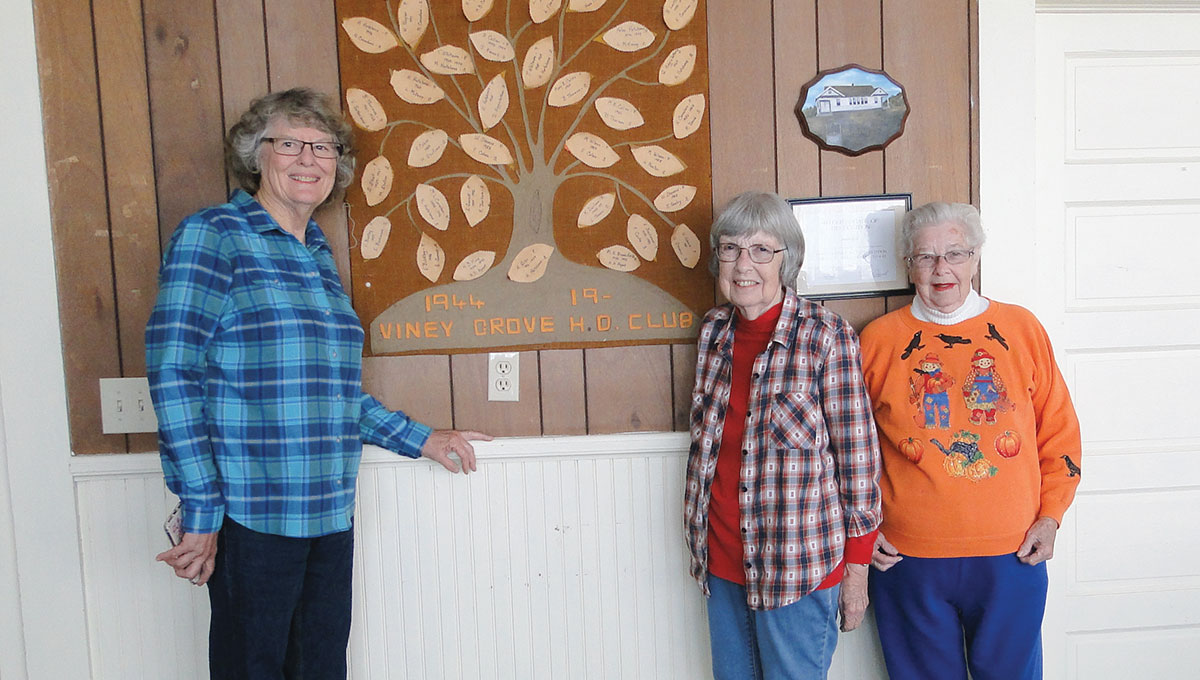
Elm Springs, Ark., is home to the newly formed Elm Springs Heritage Association dedicated to area wide history preservation and an example of the importance and joy of genealogical research. The association began with local resident, Anita Burney, who grew up in Southern California but moved to Elm Springs after her husband retired from the ministry.
As a Civil War re-enactress, Anita discovered the Civil War history of Elm Springs. She believed the town needed to become aware of it’s important history during the 1860s. Elm Springs had been home to a Confederate Civil War training camp for new recruits for two years and later taken over and occupied by Union soldiers.
Anita agreed to help the city preserve its history if Harold Douthit became mayor. He was elected and Anita began the process of preserving the history of the town shortly after took office in 2015.
The Elm Springs Heritage Association is a 501(c)(3) non-profit public charities corporation with a five-member board of directors, several of whom serve as organization volunteers. One, Mike Freels, is the volunteer genealogist and research expert and is applying to be certified by the state.
Genealogy is more than a linear map supported by birth, death, marriage certificates and gravesites. It delves into the individual lives of ancestors and the period in which they lived. Catching glimpses of the past both personal and general is important and interesting to many.
Mike, whose family made a home in Elm Springs in 1860, join Anita and a few others in bringing her idea to life. Mike’s special contribution is his passion for genealogy. Martin Collins, Mike’s five times grandfather, was born in 1800 in North Carolina and came to Elm Springs by way of Tennessee. He was 60 years old at the time and brought most of his children and their families with him, including Mike’s four times grandmother Angeline Collins.
“My first interest in genealogy came from reading my great-grandmother’s genealogy book and further investigating,” Mike said.
Mike learned George Freels, his great grandfather, died from acute alcohol poisoning and that his skin had turned totally black. He also learned that Grandfather Charles Lester Kincheloe died a mysterious death. Mike’s research began by searching for a death certificate for his grandfather’s 1946 death. While doing so he decided to see if a local newspaper carried an obituary or article.
“No proof exists, but I believe my grandfather was murdered,” Mike said.
What Mike eventually uncovered was that Charles had just come out of the Army with a friend when they traveled to Weddington with Charles carrying a lot of money on him and probably not being very discrete, especially with his friend. The two men decided to make Weddington their home. Not long after, the house Charles lived in burned with Charles’ remains being found in his mother’s room, a place where he never went. In Siloam Springs newspaper archives, he also discovered the friend quickly disappeared after the fire and his grandfather’s head had been bashed in with guitar pieces scattered nearby.
Another of Mike’s relatives was William “Buck” Brown, who served in the Confederate Army during the Civil War but was dissatisfied with military procedures and decisions. William, therefore, took off on his own and began a non-sanctioned guerrilla group. He was killed during action. One of the association’s displays contains representation of William in his Civil War attire.
Sometimes historical tidbits are learned by visiting places either known to family members or found through research. Mike traveled with his mother to visit her childhood home and learned that the family, like so many throughout long years, cooled watermelon in a stream near the house. Finally, artifacts discarded without anyone being aware of what they were or their historical value can often be found in flea markets and rummage sales.
Materials were gathered, including more than 600 Civil War Reference books, genealogy materials, such as the Dawes Rolls for Native Americans and specific family genealogies, artifacts and various collections, as well as historically accurate replica clothing. The clothing on display at the Heritage Center was sewn by Elizabeth Smith, who is also the center’s director. The Heritage Center facet of the association opened to the public in April 2016.
People learned of historic figures such as William Barrington, who arrived from the Fayetteville area in 1838 opening a general merchandise store and becoming co-partner in a pre-existing mill. Further, William selected the town name after an elm-edged spring running through it.
Another significant personage was Mary Steele, wife of Dr. Marion Steele, who had gone to the Fayetteville area to care for the wounded during the Civil War and who also served as the Elm Springs Methodist minister. While Marion was in Fayetteville, the Union Army occupied the Civil War training camp. Terrified, his young wife dressed in as many layers of clothes as she could, filled a small cart, and walked 25 miles all the way to Fayetteville with her very young child to join her husband, fearing her house would be burned. They found the house still standing when they returned and learned it had been used as headquarters for the Union Army.
The newly opened Elm Springs Heritage Association office has much to offer in its several divisions including a silent movie theater and an extensive Civil War artifact collection with the facilities open Wednesday through Saturday 11 a.m. to 3 p.m.







Hello Mike,
I am your cousin. I have been looking for information about my grandfather’s family and found a lot of information posted by you. My grandfather Gene and your grandmother Pearly were siblings. I am interested in learning more stories about my ancestors and seeing any pictures you might have. I have never seen a picture of Rosa Lillybell (Elizabeth).
Dear Mr. Freels,
I was born a Neale in Huntsville ’59, then moved to Siloam Springs area and then to WA state at six. I know of the Neale Cemetery in WA County on Robinson Rd. In May of 2002 my dad (Louie Neale, just turned 89) and mom went back to visit relatives and went to the cemetery which was overgrown, in disrepair and had no fence. My parents and his sister (nee Neale) and brother in law cleared it off and put up the bw fence to keep cattle out. Later that summer my daughter and I went to AR for a visit. My aunt and uncle took me to visit the Neale cemetery and my daughter and I put artificial flowers on some graves. I took pictures (and made a panoramic) of it. I would like to have that panoramic picture added to the Find a Grave website where I found the picture you had taken in 2012 (thus finding your name and then this article on the internet). I was saddened to see how neglected it was in 2012. Not expecting anyone to keep it cleaned off but the fence being torn down so cattle could trample the stones was discouraging. Anyway, could you contact me about emailing you the picture and also if you could give me a more physical address (other than Snodgrass farm) so my brother and I could use Google Earth to find it? Thank You.